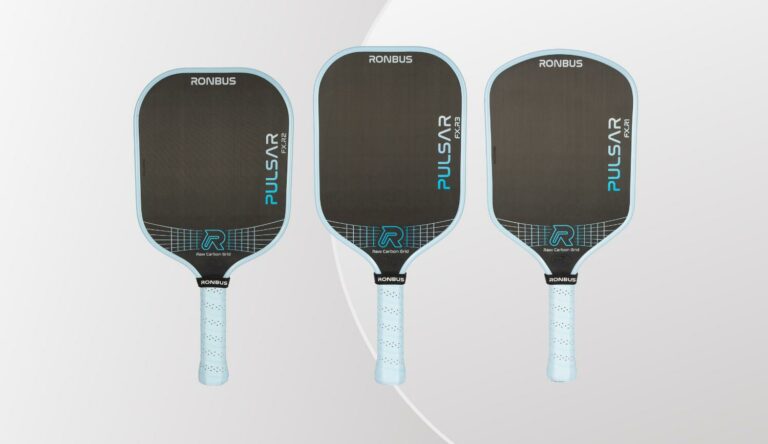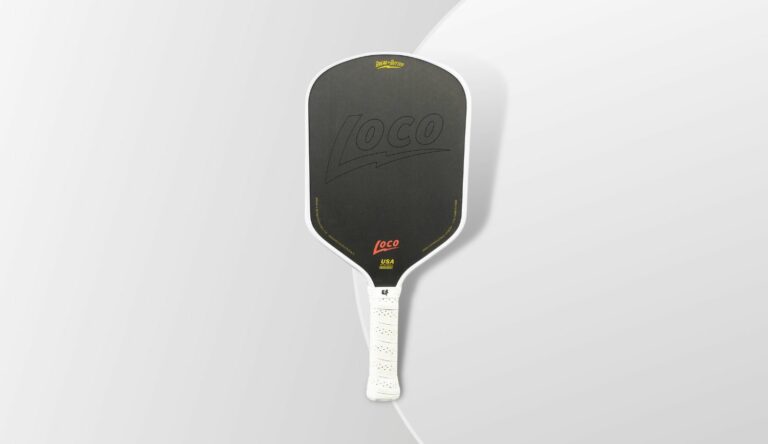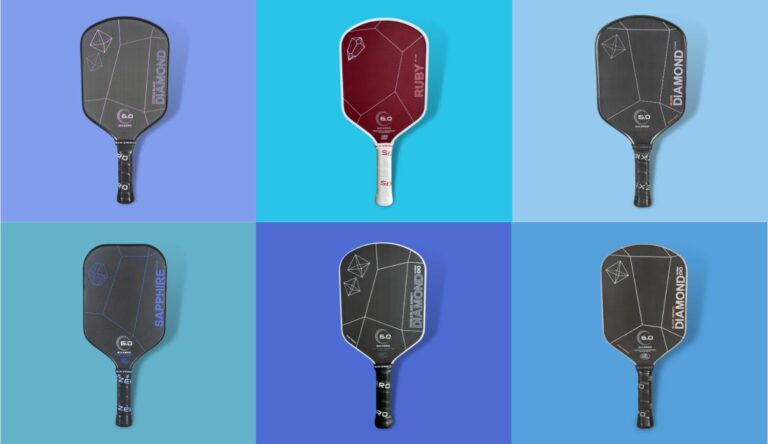There are a lot of new pickleball players these days, and the rules of the game are not always easy to understand or enforce.
In this post, we’ll be covering some of the most essential pickleball rules to understand.
If you’re a brand new player or have been playing for awhile, this post is for you.
Note that this post is not an exhaustive list of pickleball rules. We’re not covering every single rule here.
If you want to read the official pickleball rulebook in it’s entirety, you can find it here. You can download the rulebook to a computer or put it on your phone for convenience. You can even buy a well-made physical copy of the rulebook for only $9.50.
Alright, let’s dive into the rules.
Contents
- 1. The score in pickleball is kept by keeping track of three numbers
- 2. At the start of a match, the first person to serve starts out as the second server
- 3. Whenever a team begins serving, the first serve will always be made by the player on the right side of the court
- 4. Points are only scored when the serving team wins a rally
- 5. A serve must be made with the server’s arm moving in an upward arc
- 6. You must follow the double bounce rule in pickleball
- 7. You can’t volley a ball out of the air while standing in the kitchen (Non-Volley Zone)
- 8. There are multiple violations that result in a fault (i.e loss of a rally)
- 9. It’s a fault to catch or stop a ball that hasn’t bounced even if it’s headed out of bounds
- 10. Line calls are made by the team that’s on the receiving of the court
1. The score in pickleball is kept by keeping track of three numbers
Before every serve, the server must announce three numbers in order. It must be loud enough for the whole court to hear.
- The first number is the serving team’s score.
- The second number is the receiving team’s score.
- The third number is the serve order (this is only called out in doubles, and will either be a 1 or a 2, with a 1 being the first server, and a 2 being the second server).
For example, if the serving team has 7 points, the opposing team has 3 points, and the second person on the serving (i.e the first server had already lost a rally on their serve), then they would announce the following statement before they hit a serve:
7-3-2.
2. At the start of a match, the first person to serve starts out as the second server
They announce this by saying 0-0-2, or sometimes they’ll say 0-0-start.
The reason they start as a second server is because their team begins with an advantage due to being the first team able to score points.
To mitigate this advantage, the team that serves first is only allowed to have one person serve rather than two.
After the first team has finished serving due to losing a rally, it is a side out. After that, both teams will start their serve order with a 1 (they will announce by saying the current scores followed by a 1) and each teammate will get a chance to serve.
3. Whenever a team begins serving, the first serve will always be made by the player on the right side of the court
In doubles pickleball, whenever a team begins their first round of serving, the player on the right side of the court serves first.
For example, if your team is about to start serving after the other team has finished serving on a side-out, then whichever person on your team that’s standing on the right side court will serve first.
4. Points are only scored when the serving team wins a rally
If the team that is serving wins a rally, then they will add one point to their score.
If the returning team wins a rally, the score stays the same, but the person who served the ball loses the right to continue serving.
In doubles, once one team has lost rallies on each of their serves, it is considered a “side out” and the other team will now serve and have the opportunity to score points on the next rally.
5. A serve must be made with the server’s arm moving in an upward arc
Each point in pickleball begins with a serve. When serving, you cannot hit the ball while your arm is moving in a downward motion. It must be moving upward.
Also, the paddle must make contact with the ball below waist/navel level. You can swing as hard as you want and have your paddle follow through as high as you want, but the ball must make contact and bounce before your swing has risen above your waist line.
The head of the paddle must also be below the highest part of the wrist when contact is made.
6. You must follow the double bounce rule in pickleball
A lot of people struggle with the double bounce rule when starting out in pickleball.
In simple terms, the double bounce rule means that the serve and the receiving team’s return hits must each bounce before being hit.
If you’re on the team that’s receiving a serve from the opponent, you must let the ball that’s being served bounce before you hit it. No volleying it out of the air.
If you’re on the serving team, you must allow the first ball hit to you (the return of the serve) bounce before you can hit it. No volleying it out of the air.
After the ball has bounced on both sides of the court it is fair game to volley out it out of the air with no bounce necessary.
7. You can’t volley a ball out of the air while standing in the kitchen (Non-Volley Zone)
A volley occurs when you hit a ball out of the air that has not bounced yet.
You must allow the ball to bounce first if you’re going to hit it while standing in or touching the kitchen/NVZ (the line included).
If not, it is a fault and the point will be forfeited to the other team the moment you hit it.
It’s important to note that you are allowed to be in the kitchen/non-volley zone before a ball has bounced. Some people mistakenly think that you have to wait for the ball to bounce before you’re allowed to go into the kitchen.
Just make sure that the ball bounces first if you’re hitting it from inside the kitchen.
8. There are multiple violations that result in a fault (i.e loss of a rally)
A lot of people wonder: what is a fault in pickleball?
Whenever a team loses a rally in pickleball, it is the result of a fault occurring.
Here are the occurrences that result in a fault:
- A ball is hit out of bounds
- The ball bounces twice before it is struck by the receiving player
- A ball in play hits a player anywhere on their body below the playing-hand’s wrist (if a ball hits a players paddle hand above the wrist incidentally and bounces back over the net, no fault has occurred and the ball is still live)
- A player’s body, clothing, or paddle touches the net or net post while the ball is in play.
- A serve violation occurs (i.e incorrect serving form, the serve hits the net, the serve lands in the kitchen, the serve lands outside of the receiving court, etc
- A ball is volleyed at the wrong time (i.e when the player is contacting the kitchen/NVZ or before the ball has bounced twice via the double bounce rule
- A ball in contacts any permanent object before bouncing on the court (i.e a roof, basketball hoop, tree branch, etc)
9. It’s a fault to catch or stop a ball that hasn’t bounced even if it’s headed out of bounds
Even if someone hits the ball and it is clearly headed out of bounds, if it is touched by the opposing team, it is a point for the person who hit the ball.
A lot of recreational players ignore this rule for convenience sake, but you should remember that a ball is still live and in play until it hits the ground, no matter what.
It’s always a good idea to clarify with your rec group about how they handle this rule. A lot of groups allow each other to catch a ball if it’s obviously headed out and catching it will save someone from having to run for the ball.
Just watch out if you do this often, because it can be a bad habit to get into when you’re playing in more competitive matches where you will be called for a violation if you touch the ball.
10. Line calls are made by the team that’s on the receiving of the court
In pickleball, the receiving team is always the one that gets to make calls whether a ball landed in or out.
The other team does not have jurisdiction over these calls, nor does do observers sitting on the sidelines.
Even if the team across the court that hill the ball insists one way or the other, the rules state that they do not get to have final say.
Now, in rec play there’s often leniency with this rule. It’s a good idea to make an agreement before the game or after an initial conflict of opinions about how you want to determine who decides on calls.
If someone refuses to relent and continues to call out in or out balls from the opposite side of the court, you can remind them that, per the rules, it is your call to make, not theres.






